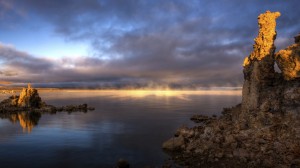New research throws scientific cold water on NASA’s purported 2010 discovery of a new form of life which lives and thrives off of arsenic rather than phosphorus, an important element that supports life as we know it.
In December 2010, NASA announced its researchers, led by Dr. Felisa Wolfe-Simon, had found bacteria in California’s Mono Lake that substitutes the toxic substance arsenic for phosphorus in its cell components.
To support life as we know it, six essential elements are necessary: carbon, hydrogen, oxygen, nitrogen, sulfur and phosphorus.
NASA heralded the discovery of the microorganism, called GFAJ-1, as significant because it offered an alternative biochemistry makeup with the potential to alter biology textbooks and expand the scope of the search for life beyond Earth.

Image of GFAJ-1, which according to NASA research, was grown on arsenic. (Image: Jodi Switzer Blum)
At the time, Ed Weiler, NASA’s associate administrator for Science Mission Directorate said, “The definition of life has just expanded, as we pursue our efforts to seek signs of life in the solar system, we have to think more broadly, more diversely and consider life as we do not know it.”
From the beginning, critics within the scientific community cast doubt on the validity of NASA’s findings.
One of the early skeptics, Canadian microbiologist Rosemary Redfield, from the University of British Columbia, blogged, “I don’t know whether the authors are just bad scientists or whether they’re unscrupulously pushing NASA’s ‘There’s life in outer space!’ agenda. I hesitate to blame the reviewers, as their objections are likely to have been overruled by Science’s editors in their eagerness to score such a high-impact publication.”

Image of GFAJ-1 grown on phosphorus (Image: Jodi Switzer Blum)
Redfield is an author of one of two new research papers, published in Science, which debunk NASA’s findings.
In essence, the papers find that, while the GFAJ-1 bacteria may sometimes use a very small amount of arsenic in place of phosphate, it cannot fully substitute the toxic substance for a form of the key element and that some phosphate is needed in order to survive.
In a statement sent to Agence France Presse (AFP), Wolfe-Simon responded that the data published in the new papers “are consistent with our original paper” and that she and her colleagues expect to publish new information in the next few months.
“A great thing about science is that the ability to do rigorous tests with controls provides an increasingly accurate knowledge of life and the universe that is extremely useful,” she said in the statement.






















Comments are closed.